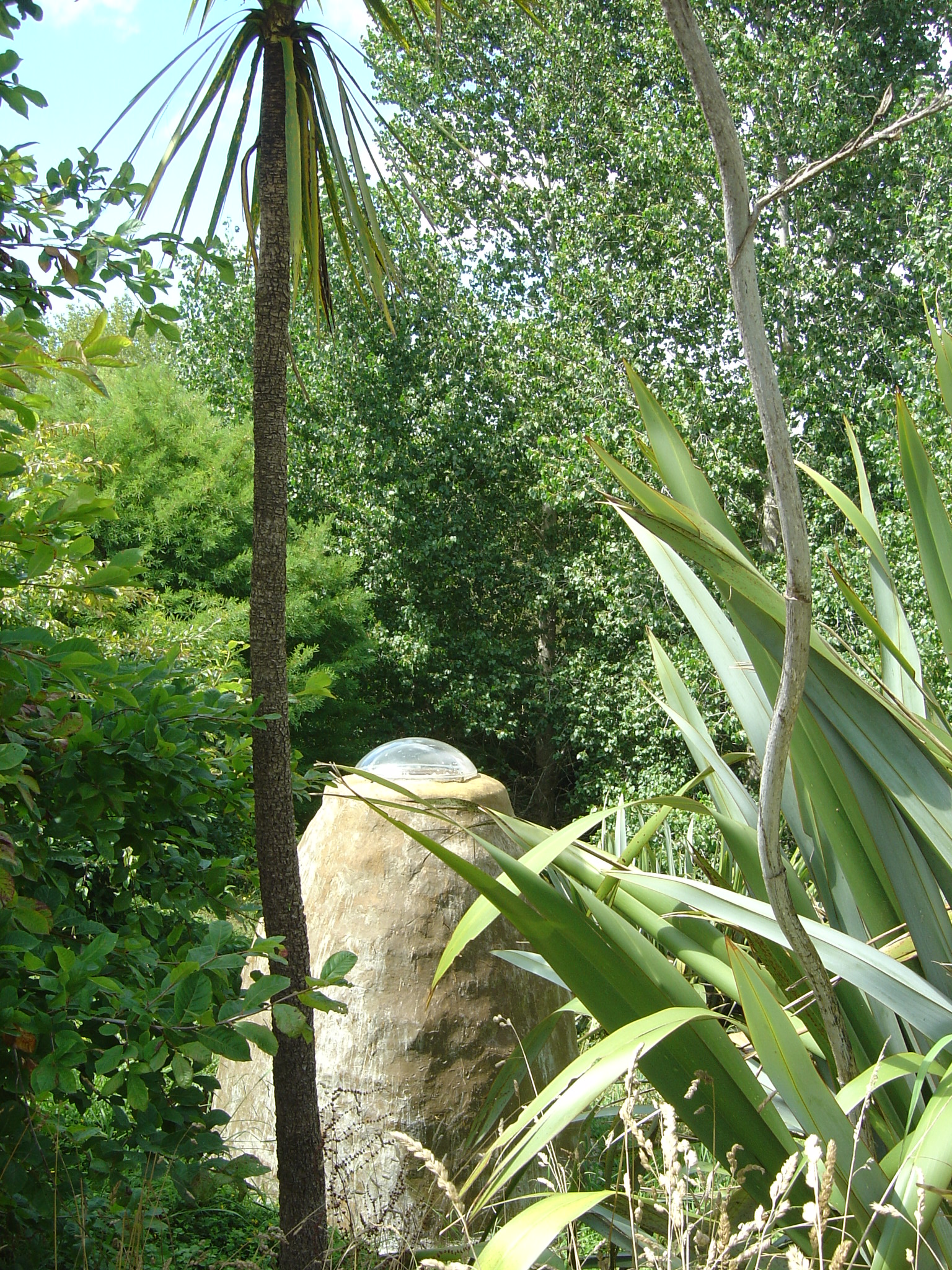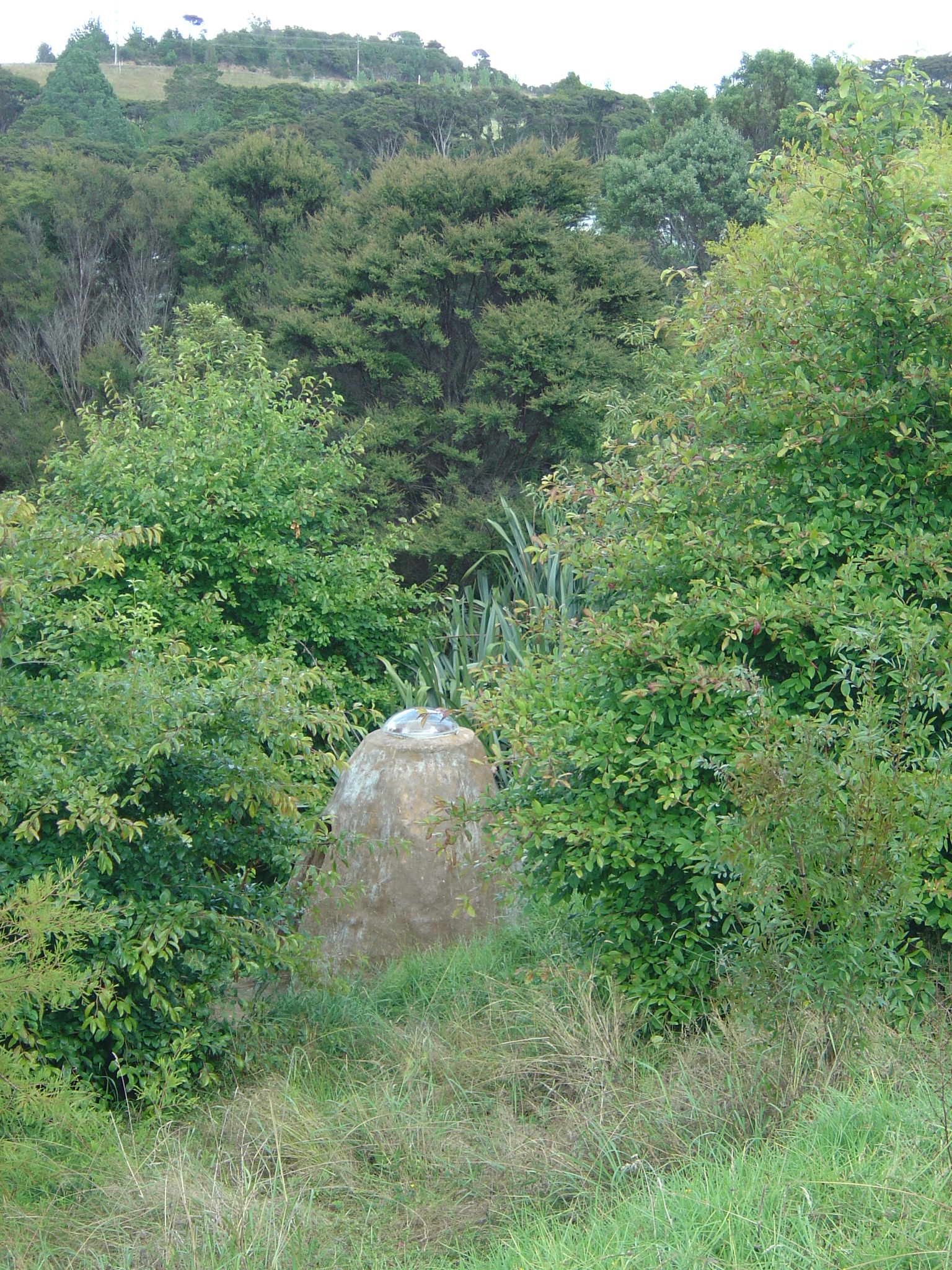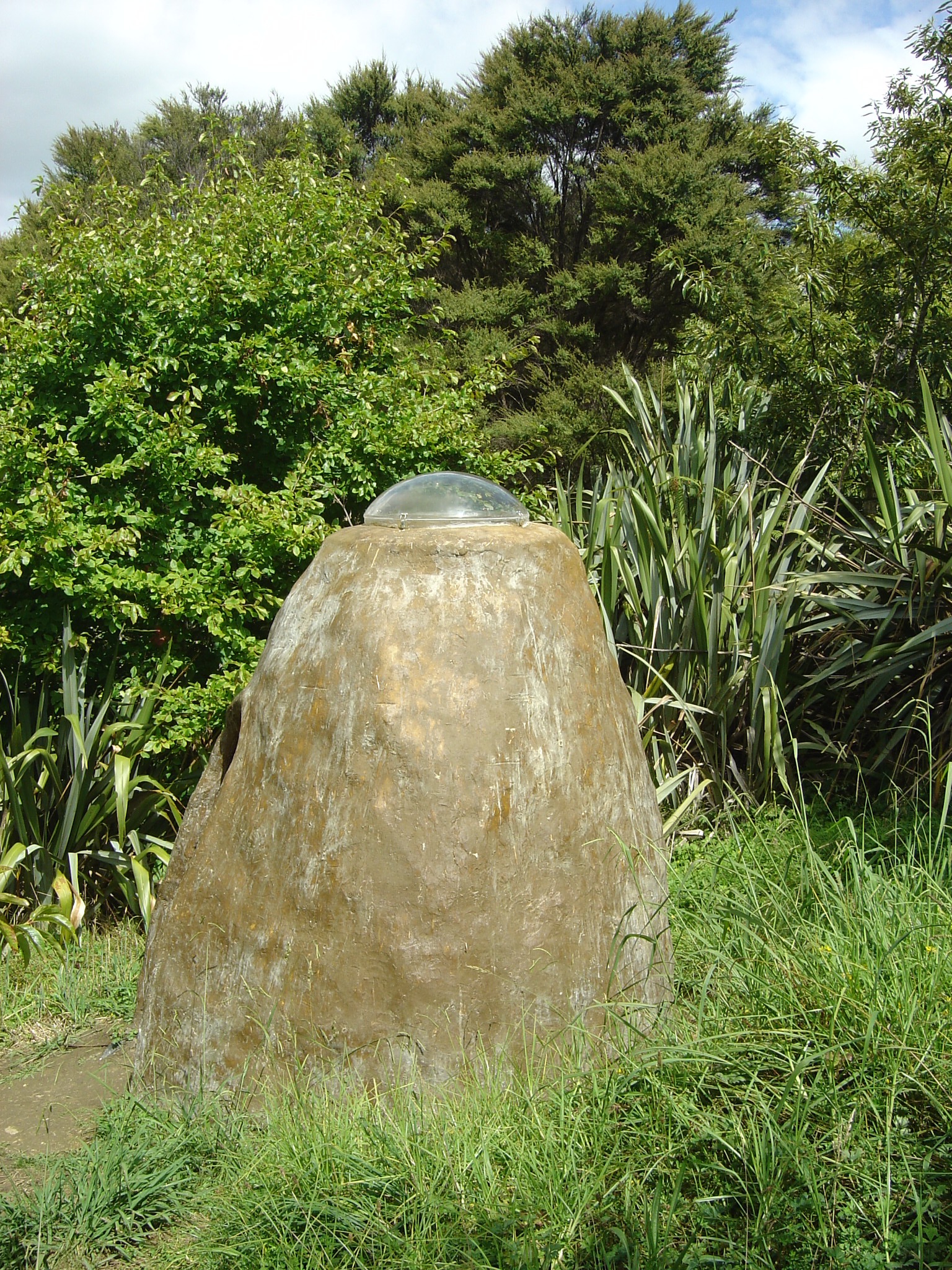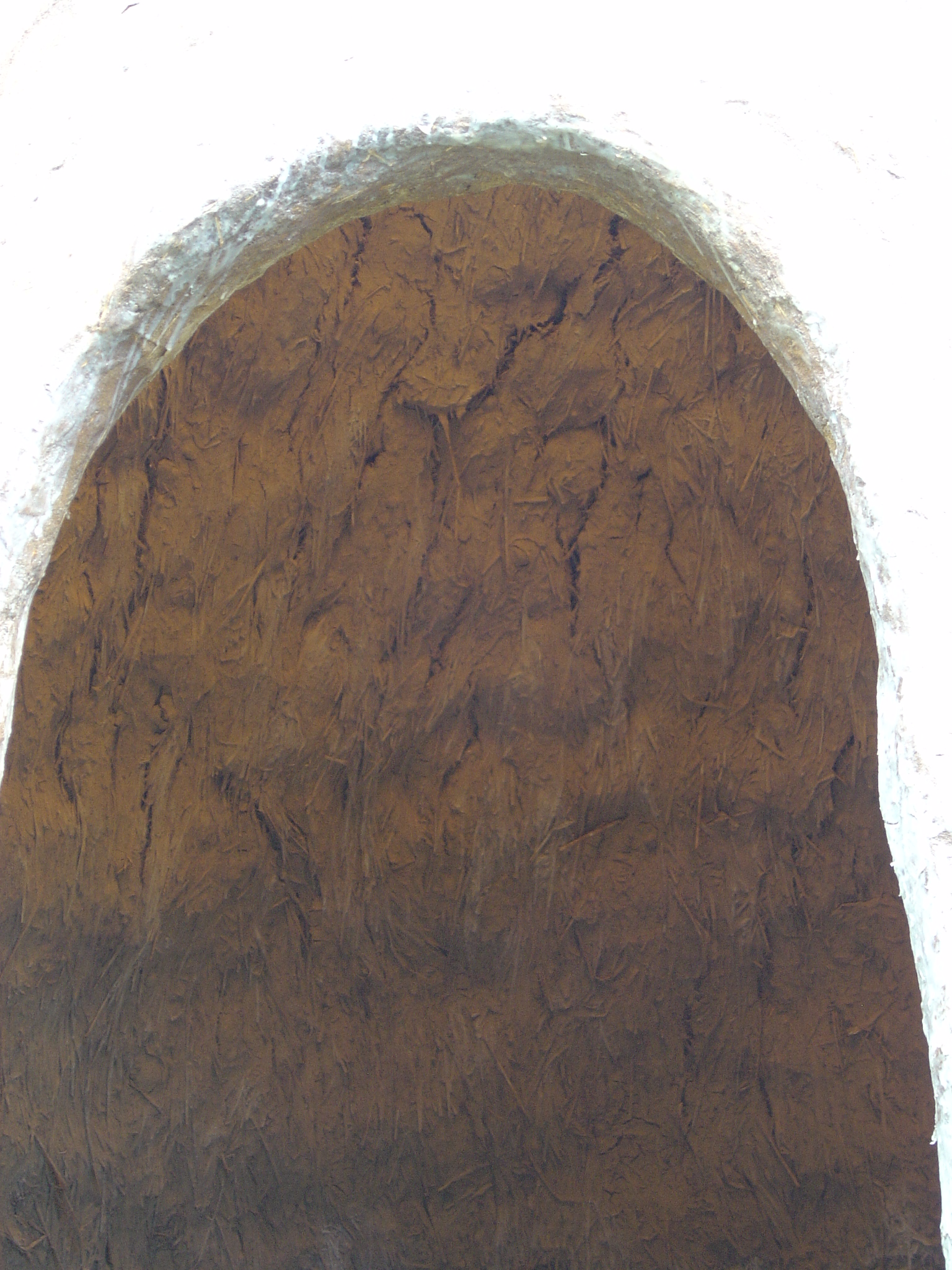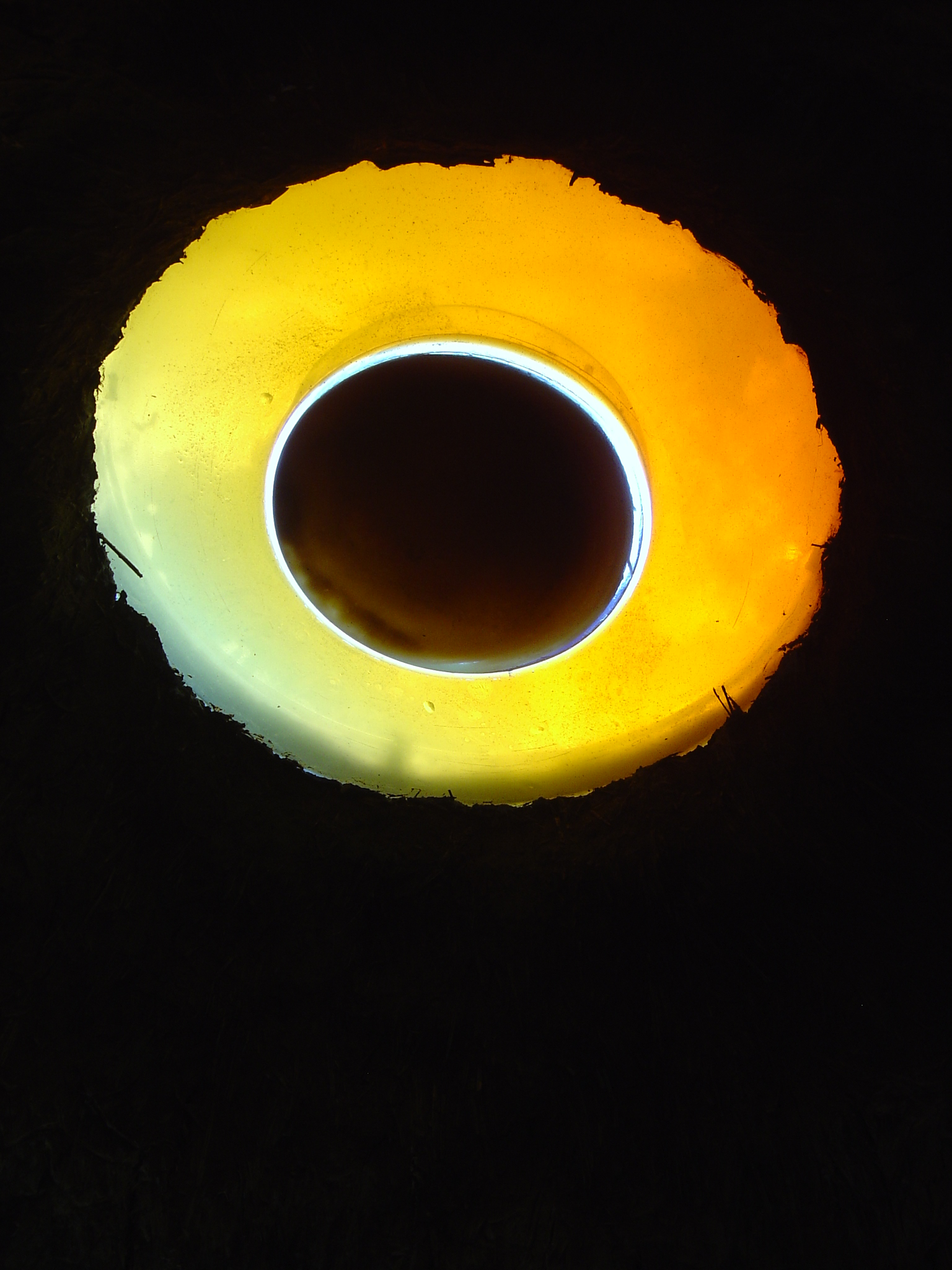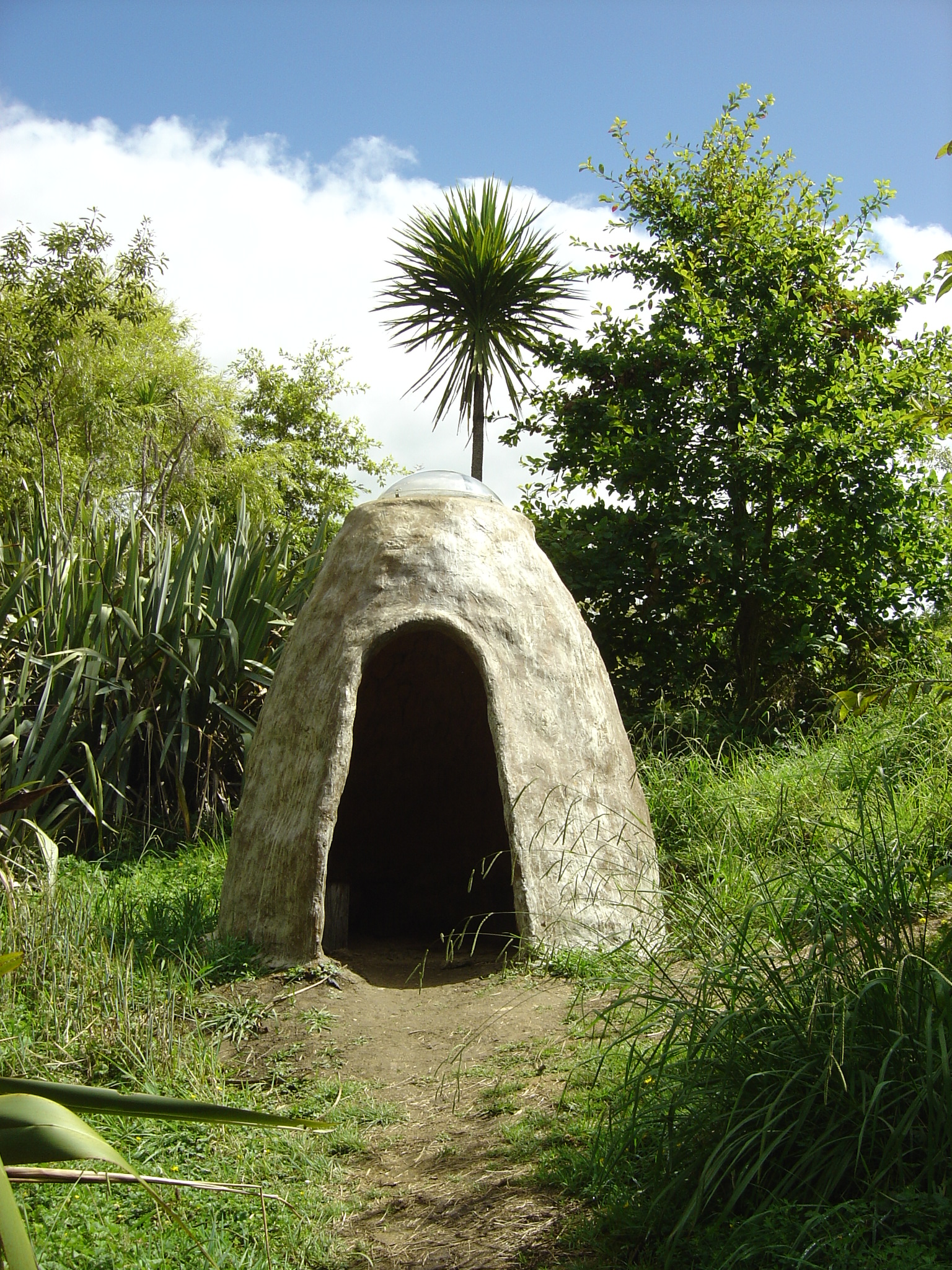Work: The Last Drop
Year: 2007
Construction: Earth, Honey, Beeswax
Size: 2500mm x 2200mm x 2200mm
Description:
Cat Simpson’s work is designed with strong references to its location. For The Last Drop she used the history of the area as a starting point. And it is a rich history. Nearby Kawau Island was once home to a copper mine, and the towers of the mine were built with bricks made by the potters at Brick Bay.
The Last Drop is a small dome-like shelter. It looks more organic than structured, rather like a Hundertwasser approach to architecture. In its shape it references wild beehives, birds’ nests, kilns, huts and all manner of abodes. Beyond this, an association extends to the concept of a photographic darkroom in that the inside of the hut is empty and quite dark except for light that flows in through a large sphere in the roof. The centre of this circle of light is filled with deep rich beeswax; an outer lighter coloured ring of honey gives the space a bright glow. During the summer months the wax softens and melts during the heat of the day and hardens again at night.
The hut is constructed in a similar way to a Japanese climbing kiln. In this it references Simpson’s sojourn in a remote village in Japan where she learnt bizen-yaki, traditional wood fired kiln techniques. It is an adobe construction made from the clay on site, straw, sand and paper pulp from the used paper at the sculpture trail and vineyard. Being inside the adobe construction gives one a feeling of slowing down; Simpson uses this to cause us to focus.
Bees and their activity are the focal point of this work. But the absence of bees in the work, their humming, their constant activity, their busy-ness, is striking. Helped along by the title, The Last Drop focuses on the magical and essential beings that bees are, integral and vital to our eco-system but often overlooked and currently in peril. The Last Drop reveals a universe that is familiar yet provides an intensely personal experience.


